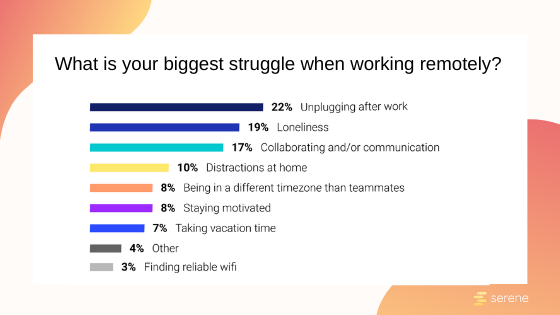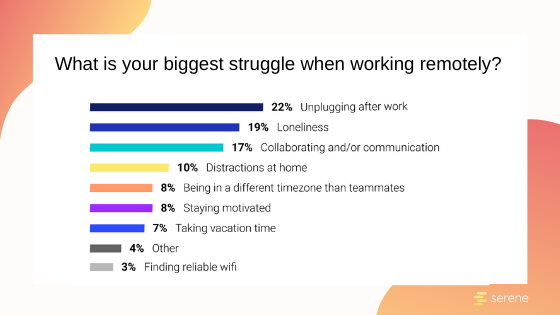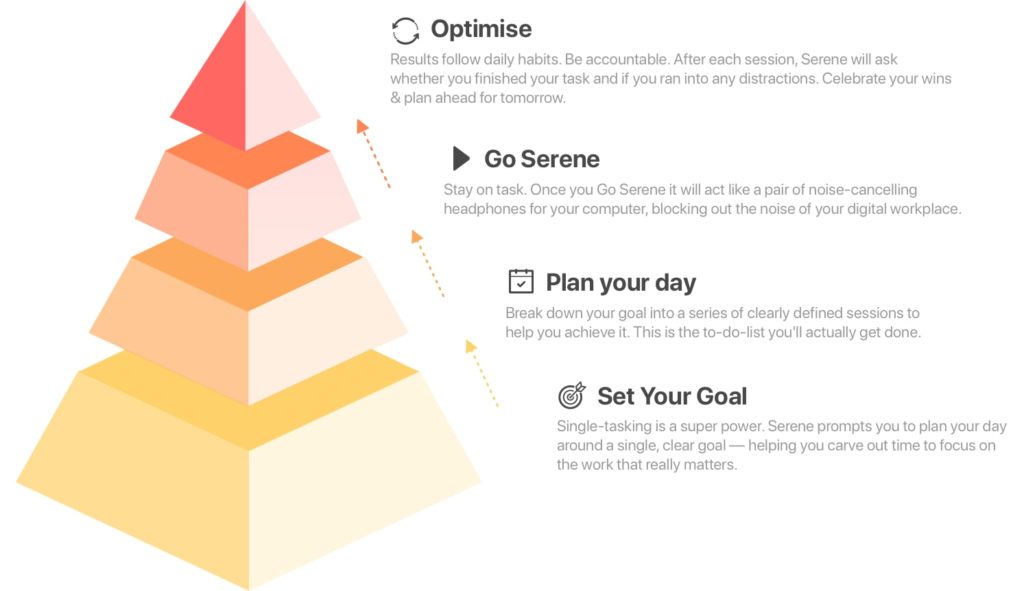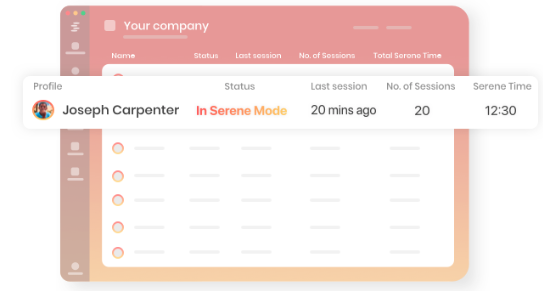Overcoming the Dark Side of Working Remotely
These days, everyone seems to be singing the praises of remote work, touting boosted productivity, improved work-life balance, and the flexibility of setting your own schedule. And as a remote worker myself since 2013, I’m inclined to join in the song.
But if working remotely is so beneficial, why have major players like IBM, Yahoo, and Best Buy called their remote employees back into the office? While these companies seemingly did it to improve collaboration as they overhauled their struggling businesses, there are several other reasons why remote work could be harmful.
Below, we’ll dive into the disadvantages of telecommuting and go over some solutions to overcoming them.
The Disadvantages of Working Remotely
1. Reduced Rate of Promotion
People often cite this Stanford study of a travel agency’s work-from-home experiment as proof that remote work is worthwhile. And indeed, the study did show promising results, including an increase in productivity and work satisfaction. What many neglect to point out, however, is that the study also found negative results, including that work-from-home employees were about 50% less likely to get a promotion!
Why? One explanation the researchers offer is that remote workers are “out of sight, out of mind.” Supervisors didn’t notice telecommuters’ performance and thus were less likely to promote them.
2. Increased Loneliness
By the end of the Stanford experiment mentioned above, more than half of those who had volunteered to work from home changed their minds and went back to the office, primarily because of feeling isolated and lonely.
When you no longer have coworkers around you, loneliness becomes a real challenge. Buffer’s 2019 State of Remote Work report found that it’s the second most commonly cited struggle for telecommuters.

3. Higher Stress Levels
A 2017 joint study between Eurofound and the International Labour Office discovered that 41% of employees doing a high level of remote work reported feeling stressed, compared to just 25% of employees who worked entirely in the office. The study authors suspect the increased stress levels were due to employers asking remote employees to do extra work after normal office hours.
The same study also found that remote employees were more likely to report waking up repeatedly during the night, which could be an indicator of stress.
4. Fewer Sick Days
Remote workers take fewer sick days than those in office, but that “benefit” takes a little diving into. It doesn’t necessarily mean that telecommuters get sick less often; it could mean that when they do get sick, they’re still expected to be online because there’s no risk of infecting their colleagues. But this expectation is harmful to the remote employees who need time off to rest and heal.
5. Deterioration of Mental and Physical Health
People say working remotely is healthier because you won’t be sitting at a desk as much, but when I started working from home, I found that I was sitting just as much—if not more than—when I worked a desk job. Why is that such a bad thing? Studies have shown that sitting for too long can increase your risk of early death—even if you exercise regularly.
Another study found that teleworkers experienced more mental and physical health symptoms than office workers.
6. More Meetings
Owl Labs’ State of Remote Work 2019 report found that remote workers actually attended more meetings than their non-remote counterparts. This is probably because, since telecommuters aren’t in-office, they spend more time in virtual meetings to keep coworkers updated.
7. Weakened Relationships
One study found that working remotely at least 2.5 days a week weakened coworker relationships because of the decreased face time with colleagues. Another study found that employees who worked from home were more likely to report feeling left out and mistreated by their coworkers.
8. Increased Interruptions
When you work in an office, it’s obvious that you’re working (or at least should be) thanks to visual cues: an office building, people in suits, cubicles, desks, etc. But when you work from home, a coffee shop, or another non-traditional setting, you destroy those boundaries. You could be interrupted by your barking dogs, someone knocking on the door, or even a family member who forgot that even though you’re sitting at the kitchen table, you’re actually doing work.

One survey of over 1,200 employees found that, of those who worked from home, 32% admitted to getting distracted by the TV, and 29% have had a child or pet disrupt a work call.
9. Diminished Productivity
While many studies note increased productivity for remote workers, none of the studies that I found were conducted on “digital nomads”—those who work online while travelling. While it’s definitely a privilege to be able to see the world while working online, I’ve found there is a major downside: diminished productivity. For me, the mental and physical stress of being on the move, fighting jet lag, juggling different time zones, and navigating new cultures can cut down substantially on productive work.
In AND CO’s Anywhere Workers report, one in five remote workers named time zone differences as their number one productivity blocker.
10. Lack of Work-Life Balance
While many report that work-life balance improves with remote work, for some, the opposite is true. Researchers at the University of Texas at Austin found that telecommuters worked five to seven more hours per week than in-office employees and had difficulty creating clear boundaries between work life and personal life.

11. Reduced Accountability
Without the visibility of being in an office, remote teams can have a hard time knowing who’s doing what at any given moment. One New-York based PR firm did away with its remote work days when it discovered that some employees were treating them as vacation days. In one instance, a colleague couldn’t come in for an important meeting because she was going to the Hamptons (without having cleared it with her boss first).
12. Communication Difficulties
When your team is remote, clarifying a mix-up isn’t as simple as pulling someone into your office to talk it out. Differing time zones make it difficult to get fast responses. And without the nonverbal cues that we get during in-person communication, it’s easy for misunderstandings to arise.
13. Cybersecurity Risks
With employees across the globe working from all sorts of Internet connections and public spaces, the security of your data could be at risk. Public Wi-Fi, and even Wi-Fi at Airbnbs and hotels, could be accessed by outsiders, making any data flowing across the connection available to hackers.
Unfortunately, many people are uninformed about cybersecurity. A 2017 Symantec study found that 81% of respondents had potentially compromised the safety of their information while using public Wi-Fi. That’s bad news for companies with substantial sensitive data stored online, especially in an age where data breaches are on the rise.
Remote Working Solutions
Of course, it’s not all doom and gloom when it comes to remote work. Multiple studies have shown that remote work has plenty of benefits. If you’re trying to make it work for you, here are some solutions:
👩💻 For Employees
1. Create Good Reasons to Get Out of the House.
To combat loneliness, join a coworking space, work from your favourite coffee shop, pick up a new hobby, or volunteer for a cause important to you. Some companies, like CRM software company Close, even provide stipends to help their remote teammates pay for coworking memberships.
2. Schedule Motion into Your Day.
With no colleagues around and no office to commute to, it can be easy to sit at your computer for too long without a break. Make it part of your daily routine to go for a walk or work out at the gym.
3. Establish Boundaries.
Establish clear boundaries in your personal life. Try setting office hours so your friends and family know you’re at work and not to bother you.
It’s also good to create physical boundaries, too. Working from bed may sound like a luxury, but it’s bad for sleep quality and productivity. If you have a spare room, create a home office you can go to to get things done. As an added benefit, it may be a tax deduction for you!

4. Use Productivity Methods and Apps.
Without a boss looking over your shoulder, it’s on you to self-manage. There are a lot of great apps and methods out there. I’ve found using Serene to set goals and work in 20- to 30-minute increments has helped me stay focused. Serene has been built as a tool to facilitate a proven method of working. The Serene Method follows 4 steps. Firstly, centre your day around a single goal. Secondly, break down your goal into a series of clearly defined sessions to help you achieve it. Thirdly, Go Serene and block all your distractions to help you stay focused. Fourthly, review and analyse your day and track the things that distract you most. Serene’s PRO-Plan will take you through all four steps, helping you do your best work.

🕴For Employers
1. Take Advantage of Project Management Apps.
As we saw above, one study found that remote workers are pulled into more meetings than their office-dwelling counterparts. If that’s the case for your company, it may be because you can’t see what your remote team is doing. To solve this, use project management apps such as Asana or Dubsado to regain oversight without dragging your remote teams into excessive meetings. Serene has also launched a teams version, and you can join the BETA.

2. Revise your Sick Leave Policy.
Yes, remote workers tend to power through sickness while working from home—but illness often requires that people stay offline to recuperate. Employers should make it clear in their sick leave policy that if a remote worker is sick, they should feel free to remain offline until they’re better.
3. Revamp your Hiring Process.
One fear that many employers have about letting their team go remote is that people will slack off. If this happens, it’s often because telecommuting wasn’t a good fit for that employee to begin with.
With this in mind, work this into your hiring process, ensuring you screen for candidates with proven self-motivation or the willingness to learn it.
4. Give your Employees Offline Time.
To prevent the increased stress and lack of work-life balance that can happen when you work online, implement offline time for your employees. You can start by requiring them to be off Slack and not responding to email at certain times of their day (and then be sure to respect those times).
5. Host All-Hands Meetings.
To improve accountability, host all-hands meetings where teams can regularly get together virtually to share achievements, failures, and goals.
6. Use the Right Communication Apps.
To fight the communication disconnect of having a distributed team, use the right apps. Here are some tools I recommend:
- Google Hangouts for virtual face time with your colleagues.
- Slack for easy and secure communication.
- Time Zone Converter for finding a meeting time for your global team.
7. Plan In-Person Events.
Even the best online tools cannot replace face-to-face interactions. Because of this, many remote companies host regular retreats. Automattic, the fully remote company behind WordPress, plans annual, seven-day Grand Meetups so its distributed team can build in-person connections.
8. Take Cybersecurity Seriously.
To protect your company’s data, have a cybersecurity expert review and improve your systems. At a minimum, require your team to use VPNs to encrypt their Internet connections, data backups to safeguard their work should their laptops break or go missing, and secure communication apps to protect sensitive data from prying eyes.
Summary
Planning, preparation and the right tools are the keys to overcoming remote working challenges
Amy Rigby – Specialist writer & digital nomad
The tech world may paint a rosy picture of remote work, but as the above research and real-life examples show, it comes with risks. Even so, there are plenty of steps you can take to overcome these challenges to build a successful remote team.
As for Yahoo and IBM? Their remote work reversal was, by some accounts, a failure that didn’t end up saving their companies.
Maybe it’s not about figuring out if telecommuting is good or bad, but figuring out if it’s right for you at this point in time. I’ll leave that up to you to decide. But with the 159% growth in remote work over a recent 12-year period, one thing’s for sure: It doesn’t look like it’s going away anytime soon.







